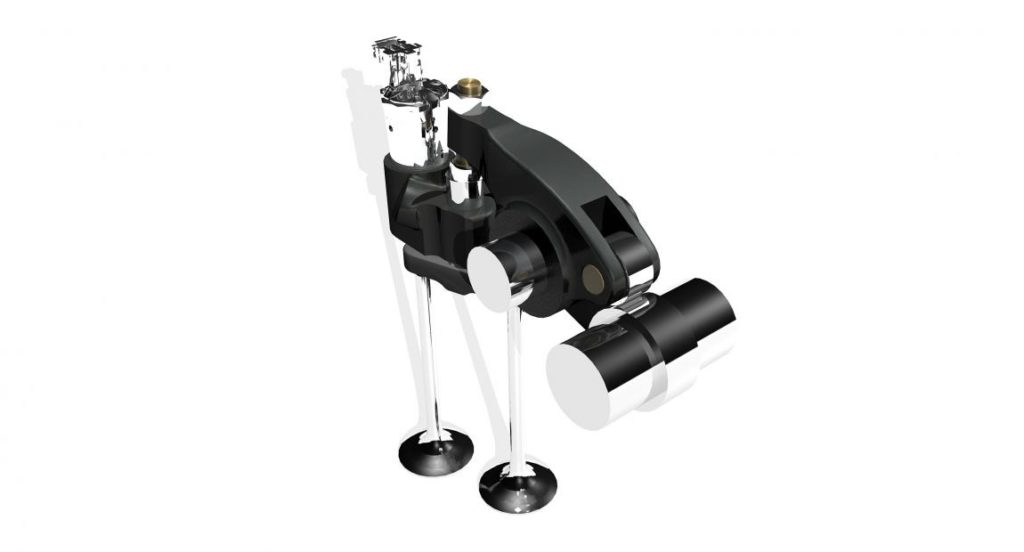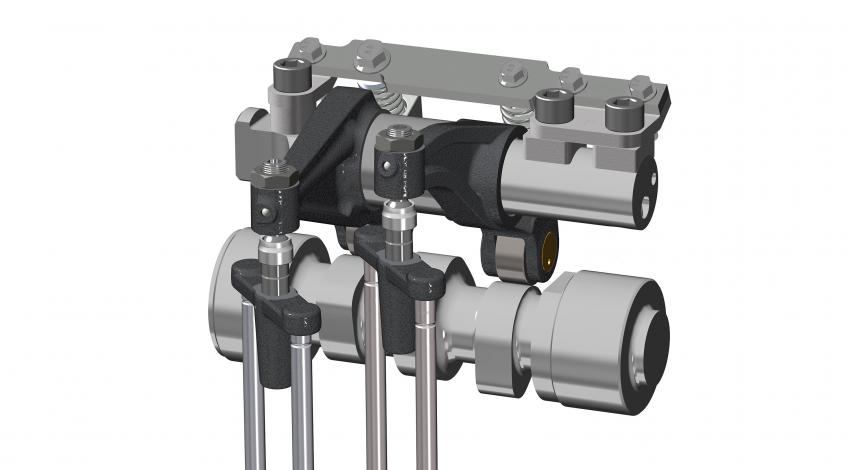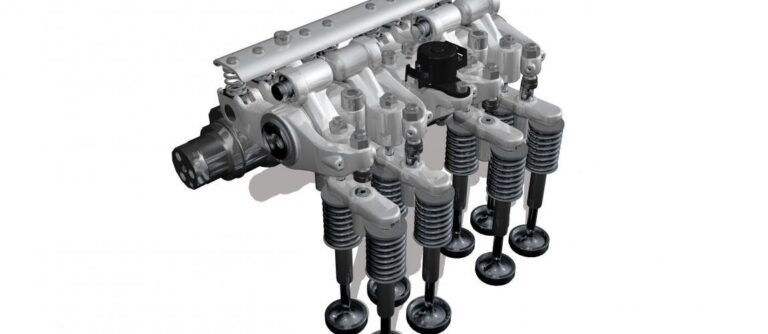Compression release brakes, generally referred to as Jake brakes, have been a feature on heavy-duty diesel engines since the 1960s, but recent developments by Jacobs Vehicle Systems, the originator of these devices, has seen the introduction of new technology that goes beyond simple vehicle braking and instead helps improve engine efficiency and emissions, as well as allowing greater engine braking performance from downsized engines.
Of particular interest are its cylinder deactivation (CDA) and variable valve activation (VVA) systems, which provide independent control over both inlet and exhaust valves. Though only just starting to see widespread adoption in new engines, the hardware behind them is already well proven as it is shared with the company’s high-power density (HPD) engine brake technology.
Engine and Powertrain Technology caught up with Steve Ernest, vice president of engineering and business development, and Hilko Schmitt, marketing and business development manager for Europe, at Jacobs to find out more about the systems.
 Can you provide an overview of the background behind the VVA systems?
Can you provide an overview of the background behind the VVA systems?
SE: We have been working on VVA at Jacobs since probably 1994. We did 15 years’ worth of fully flexible VVA, with all different kinds of flexible intake and exhaust solutions. It got a lot of attention and we put it on 15 or 20 different engines and those companies would use it as a research rig, then say, ‘OK, that was great, now we’re just going to make a regular cam’.
Since around 2010, we have learned a lot and come up with a lot of different actuators for VVA, and have had offshoots like the high-power density brake. In fact, there was a DAF brake that went into production in 2007 that had everything to do VVA, but the full potential of the design was never used in production, apart from engine breaking.
It was almost like it was such a flexible system that it was ahead of its time. People were going from fixed cam/rocker setups they’d had for a hundred years, to this fully flexible system. It was a bridge too far. So now, we have gone to a simpler two position system, to just provide a little flexibility. We now have that, as well as cylinder deactivation which is proving popular at the moment.
How does the cylinder deactivation work?
SE: It either lets the valve follow the cam, or it disconnects it. We use that on the intake and exhaust. When you shut off a cylinder, you shut of the fuel and valves, so the piston is working against an air spring. That has shown a lot of promise with both fuel economy and heating up the aftertreatment systems.
 How is that beneficial?
How is that beneficial?
SE: When you are at low or light loads, we’ve been able to take the efficiency of the aftertreatment from 50% up to 98%, with only a 30°C or 40°C rise. Typically, if you are going down a hill or just idling, all of the cylinders are still pumping through air, but running at lower temperature, so you end up actively cooling the aftertreatment. It was only a few years ago that there was this realization that engine companies were just getting exemptions [from emissions rules] because their aftertreatments were cool in certain ranges. You see trucks idling all over the place and at that point they are just spewing out whatever they do without aftertreatment. But as of 2024, there will be low load cycle emissions regulations and I think that will drive a lot of adoption of cylinder deactivation. We are also doing some work with late intake closing using VVA, that allows you to run a higher compression ratio at low loads more efficiently.
HS: We like to put our technologies in two compartments. On the one side we like to get the aftertreatment system hot quickly and thus effective earlier. Then we want to keep that system hot when operating conditions change. CDA keeps it hot when you are idling for example. Then VVA, in its many forms, falls predominantly into the bracket of getting it hot faster. The two are complementary to each other.
SE: With the CDA, we have a disconnect device that we put on pushrod engines, or with an overhead cam engine, we fit a device to the valve bridge which the rocker arm pushes on. We feed oil through the rocker arm and it either activates or deactivates the disconnect. The default is if there is no oil, it’s locked up, such as when starting the engine. The testing we are doing shows it can be shut off or on in the space of a single cycle.
Do your systems see use outside of heavy diesel?
SE: We are working with a partner called Tula Technology, which is a software company that developed a feature called dynamic skip fire. They use our actuators and turn them on and off very rapidly, which minimizes any NVH, but can run the engine on one to six cylinders depending on demand. They have that system in production with GM on some larger passenger car gasoline engines where it runs all of the time, but the drivers don’t notice it in operation.
We generally don’t operate in that space [automotive] because there are VVA systems established there. But we are looking at diesel engines down to two liters. But you do run into some packaging constraints as we have several common components. They look great on a 13- or 11-liter engine, but you get down to a 5 liter, things get pretty tight.
 How much of a challenge is it to integrate CDA or VVA into existing engine architectures?
How much of a challenge is it to integrate CDA or VVA into existing engine architectures?
SE: It is engine dependent. With push tube engines, we can fit it in on top of the push tube itself, where with overhead cam engines the technology is fitted in the valve bridge. Ideally, if an engine already has an engine brake, we sort of own that space, we try and put all of the equipment in that same space. In some cases, it can be hard. Ultimately, it is a variation of our high power density brake, and we’ve put that on around 12 different engines. Fortunately, we have very talented valvetrain engineers.
HS: The key here is modularity, so for platforms in development (and those already with engine brakes) for 2024-25, the modularity is a strategic point for manufacturers to have. You can upscale or downscale an engine to suit market demands and that is all possible within the same hardware configuration.
SE: For example, there may be 20% of engines that need the full high-power density brake, CDA etc, then some that just need regular braking and that can all be designed in at the start. With a trend toward downsizing, displacement is a big factor for engine braking, so this high-power density brake helps solve that problem.


